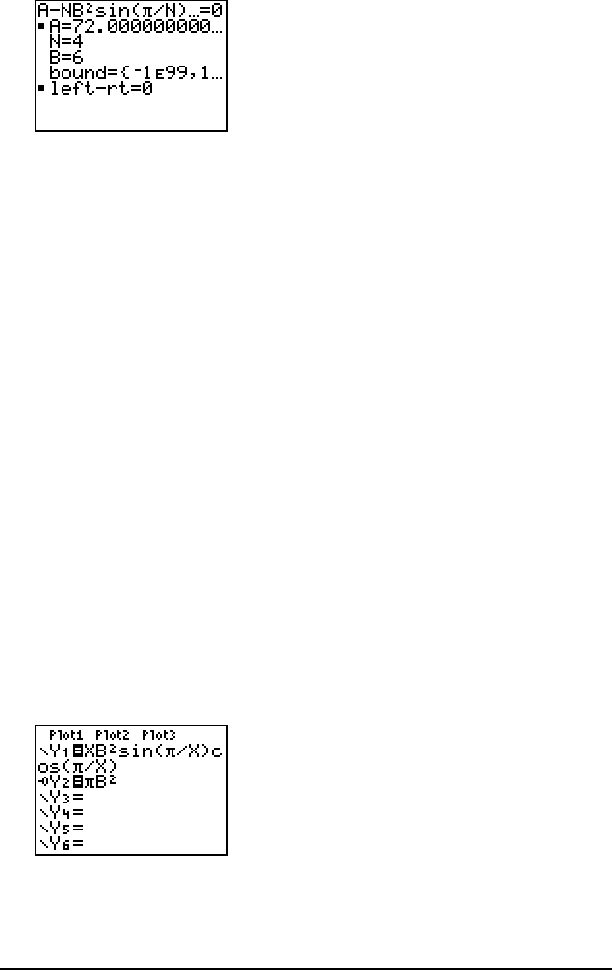
74 Activities
4. Press } } to move the cursor onto A, and then press ă \.
The solution for A is displayed on the interactive solver editor.
5. Now solve for
B for a given area with various number of sides. Enter
A=200 and N=6. To find the distance B, move the cursor onto B, and
then press ƒ \.
6. Enter N=8. To find the distance B, move the cursor onto B, and then
press ƒ \. Find
B for N=9, and then for N=10.
Find the area given
B=6, and N=10, 100, 150, 1000, and 10000. Compare
your results with p6
2
(the area of a circle with radius 6), which is
approximately 113.097.
7. Enter
B=6. To find the area A, move the cursor onto A, and then
press ƒ \. Find
A for N=10, then N=100, then N=150, then
N=1000, and finally N=10000. Notice that as N gets large, the area A
approaches p
B
2
.
Now graph the equation to see visually how the area changes as the
number of sides gets large.
8. Press z. Select the default mode settings.
9. Press p. Set the viewing window.
10. Press o. Turn off all functions and stat plots. Enter the equation for
the area. Use
X in place of N. Set the graph styles as shown.
11. Press r. After the graph is plotted, press
100 Í to trace to
X=100. Press 150 Í. Press 188 Í. Notice that as X increases,
the value of
Y converges to p6
2
, which is approximately 113.097.
Xmin=0
Xmax=200
Xscl=10
Ymin=0
Ymax=150
Yscl=10
Xres=1


















